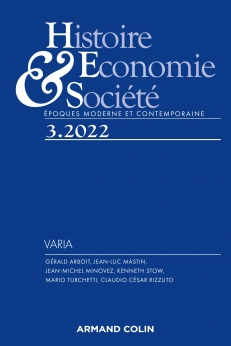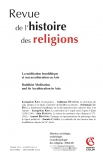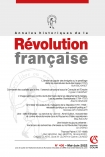
HISTOIRE, ECONOMIE ET SOCIÉTÉ (3/2022)
Pour acheter ce numéro, contactez-nous
Recevez les numéros de l'année en cours et accédez à l'intégralité des articles en ligne.
Cas unique dans la chimie française, Kuhlmann est typique des grandes firmes industrielles du Nord occupé en 1914-1918, à la fois victimes et profiteurs de guerre. 95 % de ses capacités de production étant en « pays envahi », elle était a priori condamnée à mort. Pourtant, au lendemain de la guerre, elle est prospère et a changé de dimension : cette firme familiale régionale, qui se tenait à l’écart des marchés financiers, est devenue un groupe national, présent sur l’ensemble du territoire français et coté aux bourses de Lille et de Paris ; jusqu’alors cantonnée à la chimie minérale, elle s’est diversifiée dans la chimie organique. Les administrateurs repliés à Paris ont en effet mené une stratégie de croissance externe rapide visant l’expansion et la diversification. D’une part, de multiples acquisitions d’usines ont permis d’augmenter rapidement les productions pour répondre à la demande militaire et civile (agricole). D’autre part, Kuhlmann joue un rôle de premier plan dans la fondation de la « Compagnie nationale des matières colorantes », appelée à contester le monopole allemand. Cette stratégie n’aurait pas été possible sans le soutien actif de l’État, l’alliance avec de puissants groupes miniers et industriels, ni le soutien de grandes banques (CCF, Paribas). La nécessaire ouverture du capital a cependant été maîtrisée, et le déclin des grandes familles lilloises dans le contrôle du groupe est relatif.
Kuhlmann corporation is both unique among the French chemical industry, and very typical of the large industrial firms of North of France which was occupied during WW1 : it was both a war victim and a war profiteer. As 95 % of its productive capacity was located in the « invaded country » it was meant to be condemned to death. However, after the war, it was prosperous and had changed in size : its equity had increased tenfold ; this regional family-owned company, which rejected financial markets, had become a national group located throughout France, and its shares were listed on the Lille and Paris stock exchanges ; so far specialized in mineral chemistry, it had diversified its productions in organic chemistry. Indeed, the strategy of the directors who had fled to Paris aimed, by a rapid external growth, at expanding and diversifying productions. By acquiring numerous plants and firms, they increased rapidly productions in order to supply growing quantities of products for war or agriculture. And the firm played the leading role in the founding of the « National Company for dyes Ltd », that aimed at challenging the German monopoly. This strategy was successful thanks to the active support of the State, to alliances with powerful mining and industrial groups, and the help of major banks like CCF or Paribas. The opening of the capital was necessary but controlled, and the decline of the great families of Lille in equity and management was actually relative.

